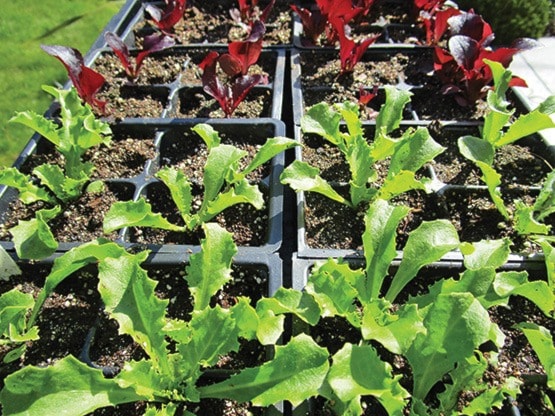Birth is miraculous. Dropping a seed into starter compost is not. It’s simply fun, an act so loaded with hope and belief that I often wish seeding could go on the whole year. It doesn’t, for most people. Like spring, seeding comes in a rush. The season is upon you suddenly, entirely, almost as if you weren’t paying attention, as if you hadn’t noticed the sequence of crocus/daffodil/tulip (but you had!), and you wonder where the time went, why you’re already – so soon in the gardening year, behind.
Let me tell you: you’re not. Or at least, not quite. Don’t panic, just yet.
Some plants require an early start to flower in one season – biennials you trick, perennials you push – but on the whole, most annuals benefit from a later start. And a start not indoors, but out.
I can hear the tomato aficionados grumbling ‘nay’. To them I say: Go to the farmers’ market. Buy seasoned starts.
Picture this: A sunny windowsill, trays of soil lined up, tags labelled, seeds sown. Three weeks later? Your babies are screaming for more light. There are rows of them too, leaning, careening, stretching their little stems to the sun. So you move the trays to various south-facing windows in the house, fretting when you’re not home. Are they roasting in mid-afternoon? Yes.
On grey days, you can just picture your seedlings flopping over, sappy, wan. You rush home to turn your trays to the ever-shifting light and have to admit: leggy is something you always wanted to be, but your seedlings? Maybe not.
A healthy seedling hasn’t been coddled in the heat, but rather stands stout and robust, with a short stem, and two small leaves. The small leaves will give way to two ‘true’ leaves, leaves that look like the plants’. When the seedling has grown one or two sets of these true leaves, you’re ready to transplant. This is the preschool phase, when the miracle of birth is gilded by memory and you realize a bunch of babies means a lot more space and resources than you had planned. In other words, a windowsill will no longer work.
I don’t have a greenhouse, so here’s how I start my seeds: I hope for the best in the house. Yes, too warm, I know, but my potting shed/garage is too cold to give me the temperatures required for germination early in the year. So I plan, plant, and hope. As soon as a handful of darlings lift their heads up from the dark, I brutally send them outside. Well, not quite outside: I put them under cover in a low plastic-covered tunnel heated with Christmas lights. You could use a cold frame or a greenhouse if you’re lucky enough to have one. Or you could use a heating mat for controlled germination, or thermometers, or grow lights indoors, or any number of gadgets your family might have bought for you at Dig This.
But the easiest and least expensive way to start seeds indoors is to pay close attention and send your babies out in the world when young. They may be shocked a bit, being thrown outdoors, so avoid direct sun and wind; put them outside on a cloudy and calm day first. And if it’s a particularly cold night, by all means bring them inside. (Gardeners call this gradual adjustment ‘hardening off’.)
And follow directions: if a seed packet says you can sow outdoors, do. It’s far easier to blame slugs for failure than it is yourself.
Christin Geall teaches creative nonfiction at the University of Victoria and is an avid Oak Bay gardener.
